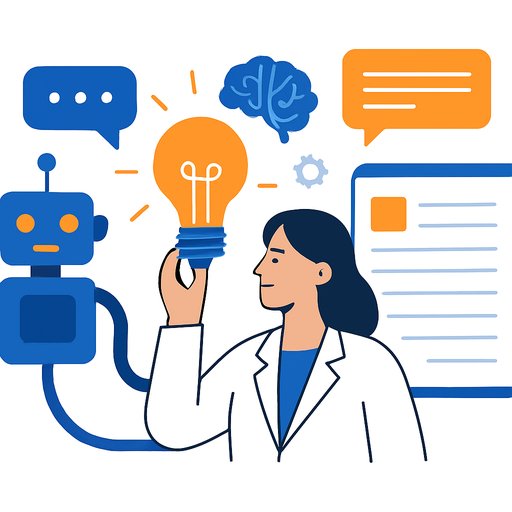Denario: an AI assistant that tackles the full scientific loop
November 4, 2025
Denario is a multi-agent AI assistant built to support every step of research: ideation, literature review, methods planning, coding, data analysis, interpretation, and manuscript drafting. It's not a drop-in replacement for scientists. It's a force multiplier when you need speed, breadth, and a second set of "hands" that can read, code, and write.
A schematic of the system shows an orange core connected to modular agents. Each module contains multiple specialized bots that message one another, pass artifacts, and escalate to writing and review. Credit: arXiv (2025). DOI: 10.48550/arxiv.2510.26887
What Denario is
Think of Denario as a stack of cooperating agents. Each one focuses on a job: ideation, literature search, methods design, planning, coding, analysis, interpretation, and writing. You can run the full pipeline end-to-end or pull a single agent for a specific task.
It's been built and tested across astrophysics, neuroscience, chemistry, biology, and materials science, with contributions from researchers in those fields plus machine learning and philosophy. The aim: make research faster, more dynamic, and more interdisciplinary without removing human oversight.
How it works (in practice)
- Input: You upload a dataset and a short brief (goal, constraints, context).
- Idea generation: Paired agents generate and refine potential projects.
- Literature grounding: Search agents scan prior work to ensure novelty and context.
- Methods and planning: A methods agent proposes approaches; a planner sequences tasks.
- Analysis back end: A multi-agent system (CMBAgent) writes, debugs, and runs code, then interprets results.
- Write-up and review: Drafting and review modules produce summaries or manuscript sections and iterate.
You can inspect outputs at each stage, swap in your own code, or run agents independently for targeted help.
What it's good for right now
- Brainstorming cross-domain hypotheses seeded by your data and goals.
- Scanning literature to check novelty and pull key references and methods.
- Fast, disposable analysis prototypes to test if an idea has legs.
- Drafting method sections, result summaries, and figure captions for later refinement.
Results so far
Across hundreds of full runs on real datasets, most outputs weren't publication-ready. About 10% surfaced genuinely interesting questions or findings, which experts then pursued. The upside is breadth and speed; the cost is review time and careful filtering.
Hard limitations you should plan for
- Reliability: Only roughly one in ten outputs is genuinely useful without heavy revision.
- Fabrication risk: Early versions produced dummy data until the team hard-blocked it. Hallucinations remain a risk.
- Citations and uncertainty: Some write-ups glossed over uncertainty and referenced prior work weakly.
- Ethics and IP: Authorship, copyright boundaries, and provenance need clear policies.
Operator checklist (keep humans in the loop)
- Start with precise briefs and constraints. Vagueness multiplies noise.
- Require explicit uncertainty statements and cite-and-quote checks for key claims.
- Log every agent step and artifact. Make provenance auditable.
- Block data fabrication at the system prompt and validate against ground truth where possible.
- Treat outputs as hypotheses and drafts. Verify methods, rerun code, and replicate results.
Tech notes for IT and development teams
- Modular architecture: Agents can be composed or swapped for your stack.
- CMBAgent handles code execution and orchestration; expect to sandbox and monitor resources.
- Interdisciplinary prompts help pull methods across fields-useful for feature engineering and analysis ideas.
- Add guardrails: schema validation, tool restrictions, dataset access scoping, and eval gates on each stage.
Roadmap from the team
Next iterations focus on higher-quality outputs, better efficiency, and automated filtering of weak results. Expect stronger uncertainty handling, improved citation mechanics, and tighter controls against fabricated content.
Access and further reading
- Paper: The Denario project: Deep knowledge AI agents for scientific discovery (arXiv)
- Code: github.com/AstroPilot-AI/Denario
Bottom line
Denario is useful when you need breadth, speed, and fresh angles-so long as you enforce review and provenance. Treat it like a tireless junior collaborator that needs firm guardrails and clear briefs. Used that way, it can surface ideas you wouldn't reach on your own and help you test them faster.
Want to skill up on agent workflows and LLM ops?
Explore practical training paths by role at Complete AI Training.
Your membership also unlocks:










